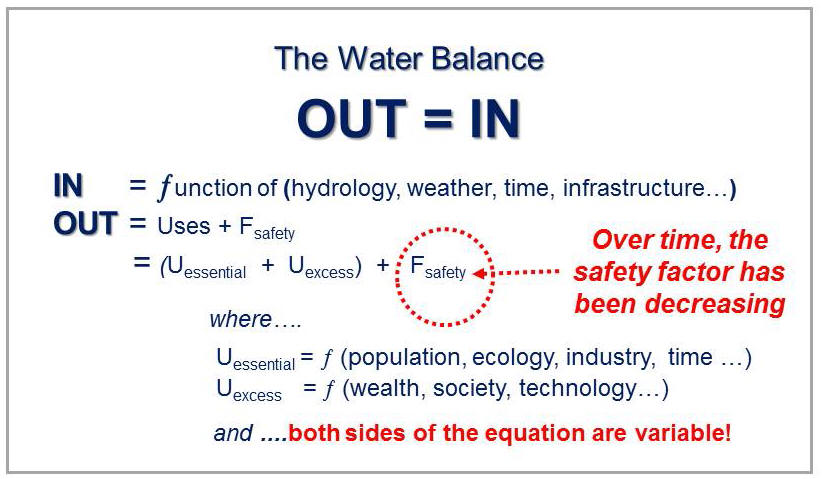Sustainable Watershed Systems, through Asset Management: Build Resiliency to Achieve a Balance: ‘Water OUT = Water IN’ (Fall 2015)
Note to Reader:
The Fall 2015 issue of the Asset Management BC Newsletter includes an article by the Partnership for Water Sustainability in BC. Co-authored by Kim Stephens (Partnership Executive Director), Kate Miller (Cowichan Valley Regional District) and Richard Boase (District of North Vancouver), the article provides context and describes why “Asset Management for Sustainable Service Delivery: A BC Framework” and two other provincial game-changers are drivers for Sustainable Watershed Systems, through Asset Management.
Moving Towards “Sustainable Watershed Systems, through Asset Management”
“Deceptively simple, the ‘OUT=IN’ equation embodies basic principles and concepts for dealing with uncertainty, managing risk, and implementing an integrated approach to land and water management,” states Kim Stephens, Executive Director of the Partnership for Water Sustainability in BC.
Adapt to a Changing Climate
 “The equation is variable on both sides, and over time the safety factor has been decreasing in BC, in large part due to population growth. The 2015 drought shows that BC may be at a tipping point. One needs to think about and act in relation to newly experienced extremes in anticipation of these becoming potentially future norms. Something for the reader to mull over is that in mathematics one cannot solve for two variables with a single equation.”
“The equation is variable on both sides, and over time the safety factor has been decreasing in BC, in large part due to population growth. The 2015 drought shows that BC may be at a tipping point. One needs to think about and act in relation to newly experienced extremes in anticipation of these becoming potentially future norms. Something for the reader to mull over is that in mathematics one cannot solve for two variables with a single equation.”
“Population-support capacity and ecosystem needs are two of many variables. When water needs are small relative to the water resource, variability on the OUT side is not that noticeable and the safety factor is large. But when needs are large relative to the available water, a small variation on the IN side magnifies the perception of impact. The safety factor may be marginal or non-existent. In many cases, BC communities are operating on narrow margins.”
“Climate change is exacerbating an existing vulnerability (a seasonal water imbalance). When we are vulnerable on the IN side of the equation, we then have to build in resiliency on the OUT side. But where will we do that, recognizing that everything is in flux? The answer is that we look for the little things that will yield  cumulative benefits in the built environment. This is key to being able to mimic the seasonal Water Balance distribution and volumes.”
cumulative benefits in the built environment. This is key to being able to mimic the seasonal Water Balance distribution and volumes.”
“Start with soil, vegetation and trees – protect and preserve the absorbency of the landscape in the built environment. Sustain the three pathways by which rainfall reaches streams – maintain the natural proportions of annual Water Balance volumes for surface runoff, groundwater and interflow (lateral flow in shallow soils),” concludes Kim Stephens.
To Learn More:
To download and read the complete article by Kim Stephens et al in the Fall 2015 issue of the Asset Management BC Newsletter, click on Feast AND Famine: Moving Towards “Sustainable Watershed Systems, through Asset Management”



